Indians are adopting terrace gardening as a new hobby. However, finding a spot to grow a garden in our modern environment might be difficult. In metropolitan places, persons who like gardening may be unable to do so. Telangana is one such state with metropolitan cities such as Hyderabad, sub-area Secundrabad, and other major cities/towns/districts such as Warangal, Karimnagar, Nizamabad, Khammam, Medak, Mahbubnagar, Suryapet, Rangareddy, Siddipet, Sangareddy, Vikarabad, Zahirabad, Armoor, Kodada, Miryalaguda/Mahabubnagar, Hanamkonda, Kazipet, Nalgonda, Mahabubabad, Mancherial, Bhupalpally, Nagarkurnool, Wanaparthy, and Adilabad.
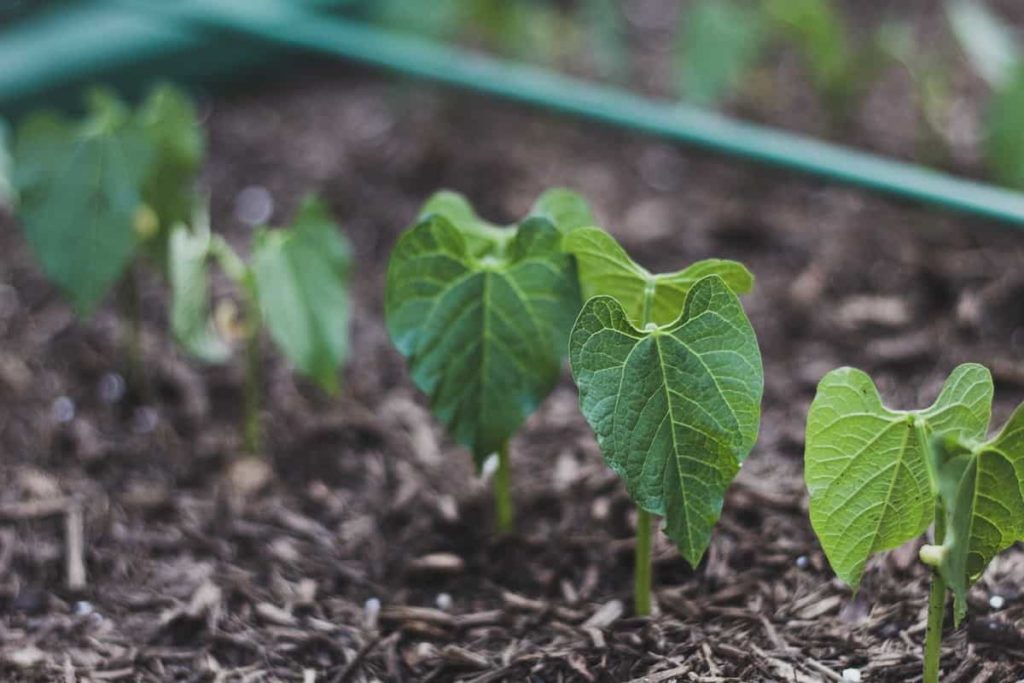
Terrace gardening comes into play here. Your terrace can be turned into a terrace garden filled with beautiful flowers and organic vegetables and fruits in such cities. Terrace gardens can increase your well-being as well as your financial well-being. In addition to beautifying your property, terrace gardening provides you with a pesticide-free garden.
Below we’ll learn the advantages and disadvantages of terrace gardening, how to start terrace gardening in Telangana, terrace garden setup cost in Telangana, what vegetables, fruits, flowers, and herbs can be grown on Telangana terraces, and a complete guide on how to start a terrace garden in major cities of Telangana.
Advantages of terrace garden
Every day, the air in big cities is contaminated by vast volumes of pollutants. For optimal health, we should breathe in fresh air rather than polluted air, which is unhealthy for us. We take in oxygen and exhale CO2 as humans. Due to their ability to take in CO2 and expel oxygen, plants are excellent team members. With a terrace garden, you’ll be able to breathe pure air in an otherwise smog-filled area.
Nature’s advantages can be enjoyed even when there are few plants around. The constant need to remove weeds and manage the soil surrounding your plants is one of the most problematic aspects of maintaining a garden. Having a container garden on a terrace means you just use the soil your plants need. As a result, maintaining a beautiful garden and safe plants is easier.
Urban areas have their disadvantages, chief among which being the absence of readily available sources of locally grown produce, such as farmer’s markets. Grow exotic and fresh fruits and veggies in your terrace garden. Your neighbors will be in awe of how fresh your food is every day if you ensure your environment can support the plants you want to grow.
The temperature of your terrace can be lowered if your terrace garden is big enough. Reselling or renting a home with a terrace garden increases the value by a large margin. It boosts property value. For a relatively minor investment, a terrace garden can be considered a helpful amenity that increases the property’s value. It’s extra or restored useful space that has been added or reclaimed.
Disadvantages of terrace garden
Plant maintenance is one of the most evident downsides, and it comes with its challenges. Watering a terrace garden can be tricky if you don’t have access to an outside water supply. Having a barrel or tank of water on hand might come in handy. A bit more work is required than in a typical garden.
In case you missed it: How to Start a Terrace Garden from Scratch in Bangalore/Karnataka: for Vegetables, Flowers, Herbs, and Fruits
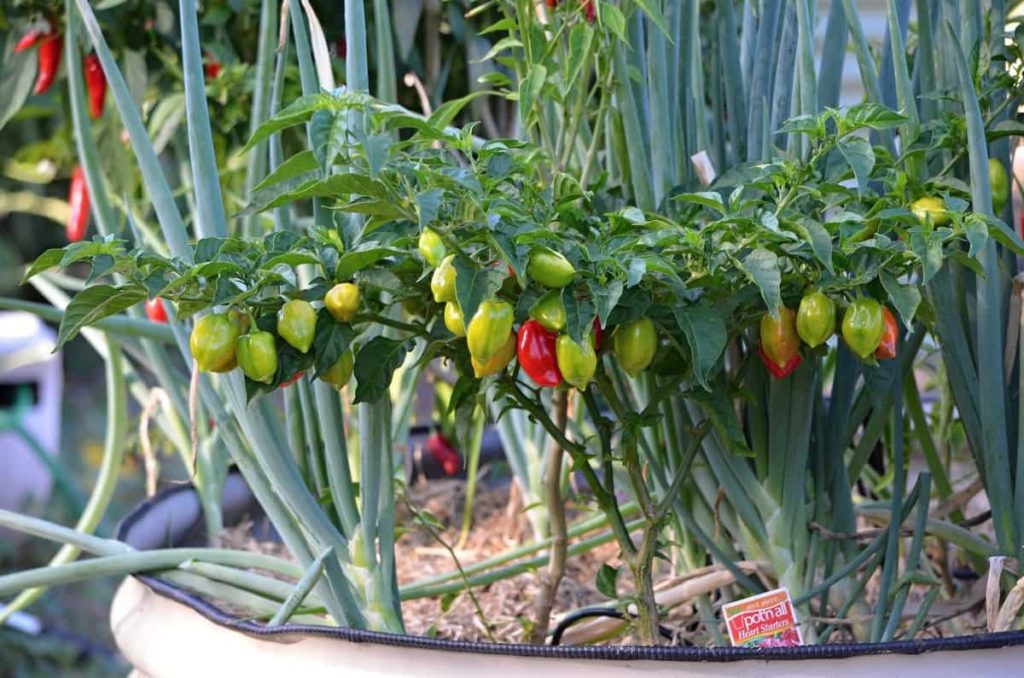
Another problem is that you can only use a restricted number of plants. On a terrace, there is almost no cover from the sun, which can either be a benefit or a punishment. You won’t be able to grow shade-loving plants. You’ll be restricted to growing just those plants that thrive in full light.
How to start terrace gardening in Telangana: Step-by-step guide
Requirements
Terrace load: Check if the roof can support the weight of the load. To ensure quality results, use a qualified expert. The soil and the pots are now rather heavy, and this weight will only increase as the plants continue to develop. You probably know how much additional weight water can add to anything if you’ve ever attempted to lift a pot full of wet soil.
Proper access: What plans do you have to bring and take out the necessary goods and supplies? Whether you reside in an apartment building, check to see if you have permission to use the lift. Depending on the municipality, you may be required to have more than one entrance or exit, as well as exit lights, fire alarms, and emergency lighting.
Sun exposure: How much of your terrace is shadowed by the adjacent buildings or the rooftop terrace? When plants are sitting on concrete, even direct sunlight can be a source of discomfort for them.
Heat: In addition to the heat generated by the sun’s rays striking the surface of the roof in Telangana regions, there is also ambient heat that is reflected off the surface of the roof, adjacent buildings, street vehicles, metal exhaust structures, and utility structures. To protect yourself and your plants, you’ll likely need some shade.
Winds exposure: Wind gusts can be relatively strong on straight urban streets, particularly on steep rises. You need to consider erecting a wall or putting up some fence. Also, check your building code to guarantee proper heights and structural soundness. When it comes to constructing safety barriers for children and animals, this is of the utmost importance.
Storage: There is a significant amount of ancillary equipment required for gardening, such as tools, fertilizer, compost, buckets, etc. Rooftops often have limited space, making it difficult to conceal a storage location. Shelves are all that is required. Some people who grow on terraces choose to use small closets.
Cost for your terrace garden: To what extent are you prepared to extend your budget? You might begin on a small scale and gradually increase it by purchasing more plants, containers, and soil. Hardscaping and construction on the roof are where the real money is to be found. The cost of tiling or stoning a surface, constructing elevated beds and boxes, installing lighting and furnishings, and other such endeavors may quickly pile up. In addition to this, their support for them may need further structural work.
Plan your terrace garden
Before you begin planting on your terrace, make a rough sketch of your overall strategy. Make a plan for growing the greens on your terrace garden, and then plan precisely how you want to achieve it. Don’t be concerned about how they appear in pots, raised beds, or even the vertical space on your patio; they will all look great. Create a relaxing spot in your yard where you can enjoy the fresh air and sunlight regularly. Vertical planters, trellises, raised beds, and containers may all help you make the most of your available area.
Waterproof your terrace garden
Building a terrace garden begins with ensuring that your terrace is entirely waterproof. If you’re doing it yourself, it’s preferable to cover the whole patio floor with a thick tarp. Alternatively, a waterproof terrace can be installed by an expert. Pots can add weight to your foundation, so be sure it can handle the extra strain.
Generally, if professionals built your house and the right mix of sand and cement was used, you shouldn’t have any problems with the added weight. Pot saucers are an excellent alternative for those who aren’t fans of the tarpaulin-less approach to water collection. If you pick these choices, waterproof your terrace.
Choose your containers for the terrace garden
One of the elements of a terrace garden that allows for the most creative expression is the use of containers. When selecting containers for your rooftop, you should consider how they look and their dimensions, weights, and materials. You will want containers that are big enough to accommodate the roots of the plants you choose. Because the quantity of soil required varies, you should study your options before planting them.
In case you missed it: How to Start a Terrace Garden From Scratch in Hyderabad: For Vegetables, Flowers, Herbs, and Fruits
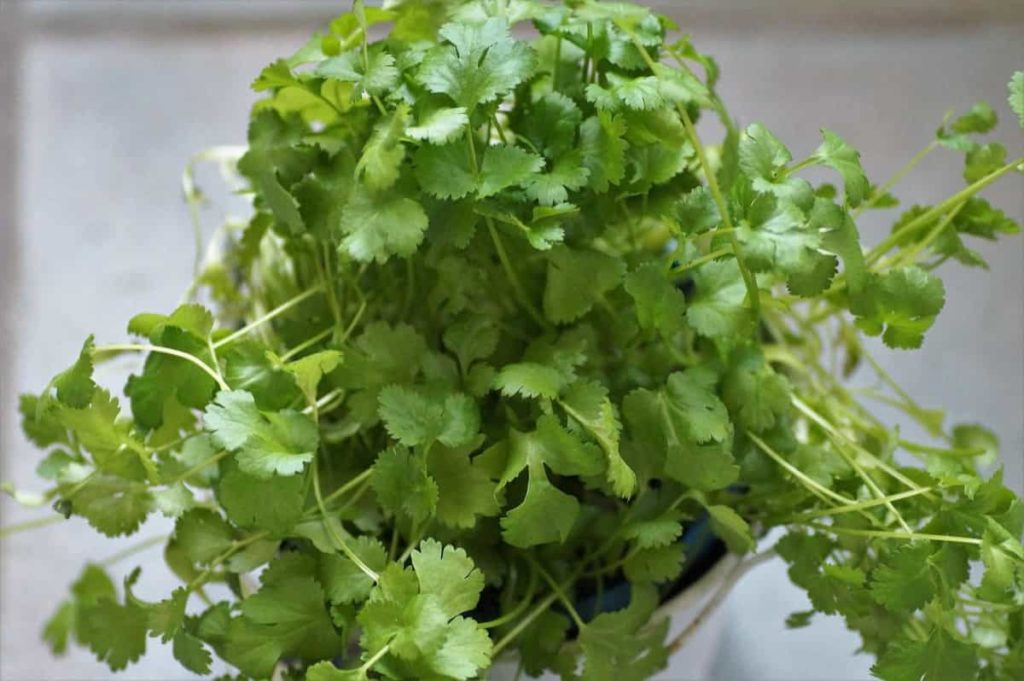
There are several plants with labels that say “Great for containers,” so look for them. Your terrace may be unable to sustain a large container if you are concerned about its weight. Remember that the containers will be even heavier when you water the plants. Clay, terra cotta, and cement are traditional materials that tend to be heavier. Containers made of plastic and other modern synthetic materials are so light that they can easily be lifted.
However, you must also consider the appropriate height for each plant. In a container that is too light, a plant that is too tall or top-heavy, such as a miniature tree or a tomato plant loaded with ripening fruit, can collapse over. You must use much heavier pots if you have a windy terrace garden. Pots made of clay, terra cotta, and ceramic have a greater propensity to heat up than synthetic ones.
When the container becomes hot, the soil and the roots also get hot, so they need more frequent watering. You can provide a hand in some measure by providing shade and mulching the tops of the pots, but drip watering will significantly simplify your life. Because of this, many individuals like using fiberglass planters on their rooftop gardens; thus, you should go through our wide variety of fiberglass planters.
Gather your tools to build your terrace garden
Compared to a regular garden on the ground level, one grown in containers on a terrace requires much less equipment to succeed. However, you will have a lot of work that involves scooping and filling. The first tools you will need are a soil scoop and maybe a trowel. When draining dirt, it is a good idea to have a little tarp on hand to prevent the area’s mess. The only other instrument necessary is a decent pair of pruners, which can be used to prune and clean plants.
After that, it depends on what you grow and how much you maintain. Unfortunately, even a garden on a terrace may have issues with vermin and other unwanted visitors. Since spores and insects can fly, you will still need to keep a close eye on your plants and do your best to identify any issues at an early stage. By ensuring that your plants always have access to food and water, you can reduce the number of challenges they face and remain healthy.
Soil preparation for terrace garden
The soil in your garden can be the last thing that interests a beginning gardener, yet it is the most vital component of any garden. You have less work to do with healthy plants and good soil. Growing in pots or raised beds lets you bring in soil.
Several high-quality potting mixes are available for purchase, or you can make your own by blending three parts compost or manure compost with one quarter part peat to create a more lightweight mixture. For better drainage, sprinkle a handful of perlite into each container. Containers need new soil every spring. You may lift the plant, repot it, or add more soil on top of the current bed.
Water your terrace garden
Water contains the essence of life. Humans and plants need water to develop and thrive. It’s best to water plants in the morning or at night, depending on when you are in Telangana. These periods correspond with the sun’s peak, enabling water to reach plant roots without evaporation.
Water them daily to optimize your garden’s potential and guarantee your plants survive. When it’s time to drink a lot of water, plants are well-positioned to do so since they need to be well-hydrated throughout the day to live. The optimal time to water the garden is before 10 a.m. when the soil is better able to absorb the water. It is best to refrain from watering during the middle of the day on days with clear skies and intense sun.
In case you missed it: 18 Common Cilantro/Coriander Plant Problems: How to Fix Them, Solutions, and Treatment

Plants should not be watered during the warmest portions of the day to prevent stifling growth. Water your plants later in the day when the sun is lower, so they will be more receptive to water. Because of this, water uptake will be expedited, and plant development won’t be hindered. At this time of year, you protect water from evaporating by watering your plants. Even in the sweltering heat of summer, you should constantly water your plants in the evening.
The summer months in Telangana need twice-daily watering for many terrace-grown, sun-loving vegetables and flowering plants that thrive in the spring and summer months, particularly in April and May. Using self-watering containers is an option to consider. Because wet leaves provide an ideal environment for fungus growth, it is crucial to remember that they must be given a chance to dry out before night falls.
Don’t water your plants often with very little water, and keep the moisture level consistent. When watering plants, it’s essential to do so sparingly yet thoroughly. Wet leaves are a potential source of disease. Thus, it’s critical to maintain a dry environment for the leaves. The importance of providing proper watering cannot be overstated. Make sure the water reaches the plant’s roots. Keep in mind that water seeps into the soil gradually and steadily. Because of this, it is essential to offer a large quantity of water regularly.
Every time you water the area around the plant, ensure the water is uniformly distributed. Watering plants using a drip or sprinkler is quite efficient. You may use an automated sprinkler system with a moisture sensor on the lawn, the balcony, or the bed. Too much moisture harms roots. As a result, water is prevented from building up. Use soil that is of high quality and has an adequate amount of sand and clay. You may use a variety of watering tools to get the job done.
Fertilizer requirements for your terrace garden
Fertilizer should be applied consistently to the container plants. Even the best potting soil will run out of nutrients over time because plants use them, and the water washes them away. The bigger a plant becomes and the more water it consumes, the more quickly its surrounding soil will be used up. Fertilize once every 2 – 3 weeks, depending on the fertilizer.
On the market nowadays, you can find a wide variety of quality fertilizers, including a growing number of organic options. Using a water-soluble fertilizer is the quickest approach to providing nutrients to your plants. This can be accomplished by soaking the soil, which immediately delivers the fertilizer to the roots, or feeding the leaves.
Manage pests and diseases in your terrace garden
Pesticides based on neem oil are among the most powerful organic ones. Aphids, mealybugs, and whiteflies are among the more than 200 species of chewing or sucking insects reported to be resistant to it. It is harmless, leaves no toxic soil or leaf residue, and efficiently kills or controls pests. It also works well as an anti-fungal medication. Powdery mildew can be prevented as a result.
Other organic insecticides beneficial for controlling caterpillars and aphids include tobacco. Then again, it must be applied to peppers, tomatoes, and eggplants. Let the mixture sit in the water for a full day after mixing one cup of tobacco with four liters of water. Place the solution in bright, warm light to get the most out of these components. The solution will have a faint tea-like tint. Mixing the solution before applying it to the plants is essential.
In case you missed it: How to Prepare the Soil for Marigold Plants: Best Soil Mix, pH, and Compost
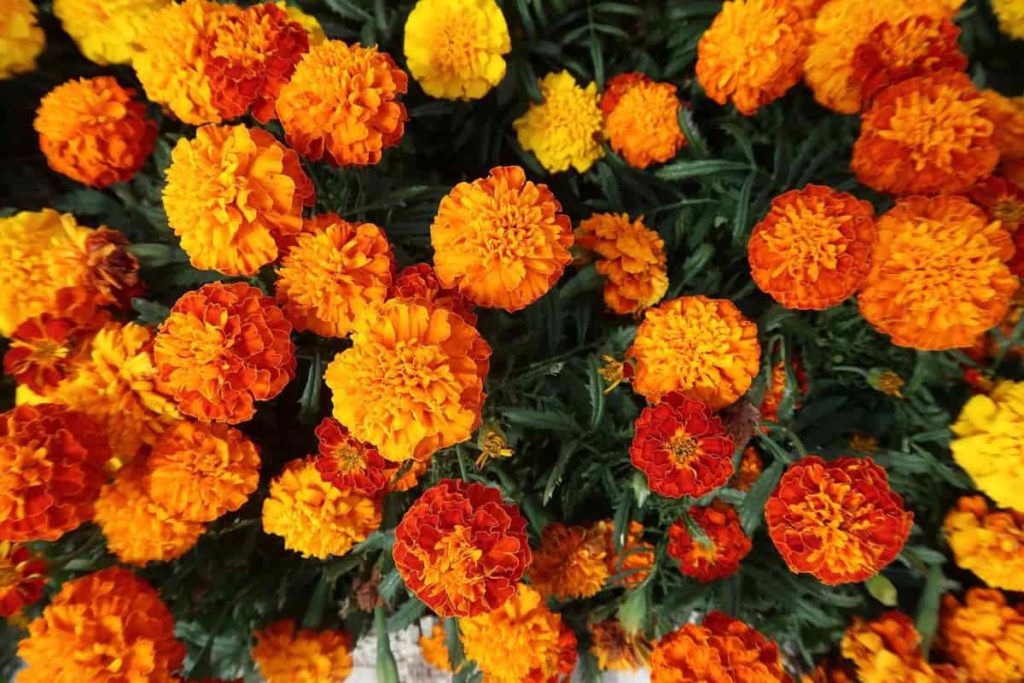
The peel of an orange is an excellent pest deterrent. To make orange peel tea, boil one orange peel in two cups of water for roughly twenty-four hours, then strain the concoction. Use the strained solution to water the plant once it has been strained thoroughly. An efficient way to get rid of soft-bodied insects such as mealy bugs, mealworms, mealy bugs, and mealybugs is to use orange peel.
Prepare a mixture of a garlic clove and a medium-sized onion by grinding them together. This combination should be diluted with around 1 liter of water. Rest it for approximately an hour before using it. Once you’ve done that, add one teaspoon of dry red chili powder and thoroughly mix everything. Spraying the plants with this solution is now possible. Chopping up 10-12 garlic cloves, adding one liter of water, then filtering the mixture is another alternative.
Put the ingredients in a large bowl and let them sit for two days before using. Applying and spraying this solution on your plants regularly can keep them free of parasite pests like mealy bugs and aphids. Starting the treatment process when there are signs of an infestation is critical. If an infection develops, removing unhealthy portions of a plant or applying chemical fertilizers becomes more difficult.
You should wait a few hours before using the solution to be sure it won’t harm the plant. A diluted spray should be applied to an area where the spraying procedure has been damaged. If the plant continues to suffer, you can try a different formula. Don’t forget to place the solution behind the leaves, where bugs hide. Spraying on rainy days is terrible because the rain would either wash away or dilute the treatment.
To prevent burning the leaves, apply this solution as late in the evening as possible. Spray sparingly to avoid oversaturation. Spray the region at least once a week and keep an eye on the situation. Organic pesticides will not have an immediate impact. As this is a long-term process, you’ll have to be patient to see results after a couple of weeks. A salt spray, in addition to being beneficial in combating spider mites, is also a good idea.
Combine two tablespoons of rock or table salt with four liters of warm water and apply the solution to the affected regions. Picking up the creatures and putting them in a bowl of soapy water might be easier than other times. In your garden, grow annuals and herbs. This is the simplest technique to attract mealybugs and beetles to your terrace, where they’ll clean for you.
Mulch your terrace garden
Mulching can keep your plants healthy and well-hydrated all year round. Using mulch can keep your plants safe from pests and help them retain water for extended periods. Mulch can be made from hay, fruit peels, and shredded wood.
Best vegetables for Telangana terraces
Bottle gourd, bitter gourd, Brinjal, ladies’ fingers, lettuce, tomatoes, red spinach, Malabar spinach, and potatoes are among the vegetables that can be grown easily on the terraces of Telangana.
Best fruits for Telangana terraces
Guava, gooseberry, Papaya, lemons, bananas, currants, watermelon, and pineapples are among the fruits grown on Telangana terraces.
In case you missed it: The Best Fertilizer for Tomatoes in Pots
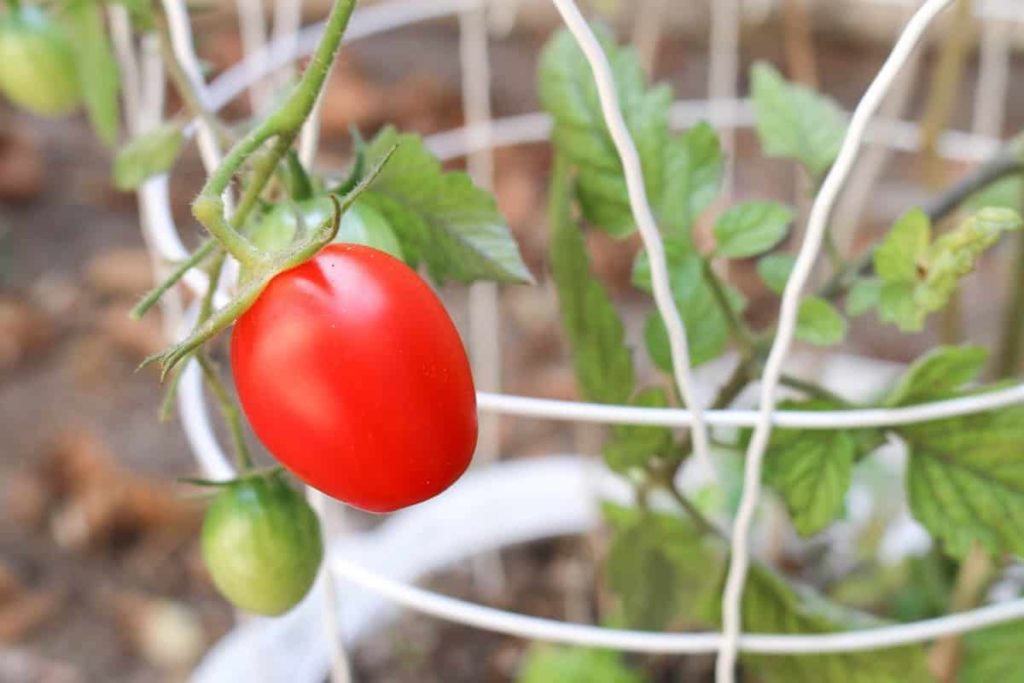
Best flowers for Telangana terraces
Marigolds, geraniums, chrysanthemums, roses, lilies, gerberas, and begonias are among many flowers that can be grown on the terraces of Telangana.
Best herbs for Telangana terraces
Coriander, cilantro, chives, fennel, basil, mint, and oregano are among many herbs grown on Telangana’s terraces.
Conclusion
Gardening on one’s terrace has become a pleasure for many people of Telangana. Many benefits of terrace farming include greater physical fitness, more effective use of time and space, recycling of domestic garbage, and so on. As a bonus, it provides a habitat for urban wildlife and reduces temperatures on the terrace. People living in metropolitan areas aren’t the only ones who use terrace gardening. If you have a little space, you may want to consider turning it into a garden.
- Broccoli Seed Germination and Selection
- Asparagus Seed Germination and Variety Selection
- Seasonal Flower Gardening: Best Practices for Spring, Summer, Fall, and Winter
- How to Grow Hibiscus from Flower
- Plantation Ideas for Home Decoration: A Beginners Guide
- Flower Garden Designs and Layouts for Beginners
- Planting and Spacing Techniques in Papaya: A Beginner’s Guide
- Growing Gold: Essential Techniques for Planting Pineapples
- How to Make Kalanchoe Plant Bushy: Home Remedies and Solutions
- 11 Reasons Why Your Gardenia is Not Blooming: Home Remedies and Solutions
- Eco Elegance: The Guide to Designing a Drought-Tolerant Landscape
- Gardening on a Slope: Strategies for Hillside Landscaping
- Nourish and Flourish: Top Organic Mulches for Thriving House Plants
- Everything You Want to Know about Indian Mogra Flower: Discover Uses and Growing
- Green Thumb Success: Expert Tips for Cultivating Greenhouse Pumpkins All Year Round
- Maximize Growth & Flavor: The Ultimate Guide to Companion Planting in Herb Gardens
- How to Control Rhododendron Problems Naturally: Home Remedies and Organic Ways to Fix Them
- Natural Magic: The Remarkable Benefits of Cinnamon for Plants
- Best Steps to Revive Dying Tulip with Natural and Organic Treatment
- 10 Reasons Why Your Angel Trumpet is Not Blooming: Remedies and Treatment
- How to Fix Periwinkle Leaf and Flower-Related Problems: Natural Remedies and Solutions
- How to Fix Zinnias Leaf and Flower Problems: Discover Natural and Home Remedies
- Organic Steps to Induce Lemon Tree Flowers: A Comprehensive Guide
- Bloom Booster: Crafting the Perfect Homemade Bougainvillea Fertilizer
- Optimizing Growth: A Guide to Applying NPK Fertilizer for Potted Plants
- 10 Best Homemade Fertilizers for Rubber Plant: DIY Recipes and Application Method
- How to Boost Female Pumpkin Flowers: Effective Steps for More Flowers and High Yields
- Transform Your Indoor Garden: Top Benefits of Pink Salt for Houseplants
- 10 Best Homemade Fertilizers for Peacock Plants (Calathea): Easy DIY Guide
- Unlock Blooms: 9 Reasons Why Your Potted Chrysanthemum is Not Blooming
- 8 Reasons Why Your Potted Hibiscus is Not Blooming: Fix it with Simple Solutions
- Unlock Blooms: 9 Key Reasons Your Potted Frangipani Won’t Flower
- 10 Reasons Why Is My Ice Plant Not Blooming: Remedies and Treatment
- 10 Reasons Why My Potted Hydrangea Not Blooming: Treatment and Remedies
- 10 Reasons Why is My Wisteria Not Blooming: Remedies and Treatment
- 10 Reasons Why is My Goldfish Plant Not Blooming: Remedies and Treatment